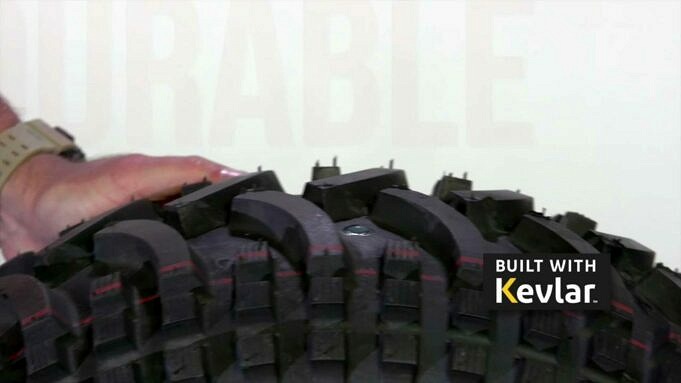HOW TO PATCH A TUBELESS TIRESJAN 17
HOW TO PATCH A TUBELESS TIRESJAN 17
Although we all know how repair tubes, gluing the same patch inside a tire carcass will cause it to rip off quicker than a bumper sticker from the spaceship. Tubes are made from butyl, a synthetic rubber that bonds well to rubber cement and other patches. Butyl rubber is the most common type of tire, however, it can be polluted by various alloying elements, moisture and silicone mold release agents. A conventional patch will be destroyed by any one of these factors. Tires made from natural rubber such as Continentals or Hutchinsons can have a greasy coating that repels adhesives. Anyone who has tried to repair a tubeless tire on the trail knows that it takes more mojo than what we have in our water bottles to patch a tire carcass.
Mikes Tire Center was our field trip. We were able to see how big boys repair tubeless automobile tires. Mikes offers a wide range of tires, from Geo Metros’ 29-buck tires to earth-mover tires for as little as a new Geo. Then we asked Stan ?Notubes? Koziatek was open to sharing his secrets for patching tubeless tires. Surprisingly we found that the basic techniques for patching a tire carcass (full sized radial or pint sized knobby), are the same as those used for a presta valve innertube. This is how it works.
1. Locate the holes. To inflate the tire, either place it in water or use a waterbot to spread water with a teaspoon dishwashing detergent on top. With a ballpoint pen, mark the areas where bubbles have formed on the tire.
2. Remove the tire It can be removed by hand. Then, clean the tire’s interior with water and dishwashing detergent. Dry it on a towel.
3. Banish the infidels. Use a pen knife or a sharp object to remove any thorns and spikes from the carcass. Locate the markings on the tire’s outside and draw large circles around each spot on the inside where you will be placing the patches.
4. The secret to removing moisture from the carcass is to use a hair dryer.
5. Chemical treatment: A clean cloth, dipped into Liquid Tire Buffer, can be used to scrub the patch in small circular motions. The rubber will melt and deposit onto the cloth. Avoid scraping the carcass with a metal scraper or sanding it as this can cause damage to the fabric layers.
6. Time for the glue Don’t touch the glue!
7. Now, apply the patch. Peel off the foil from the patch. You should secure the patch to your carcass for at least 15 to 20 minutes to get the best results. You can use a vice, a C-clamp, and a piece of wood to secure the patch. Regular patches for bicycles will do the job, but oval, longer types are needed to seal large sidewall gashes.
IS IT IT?
That’s all there is to the whole thing. The harsh chemicals in the tire buffing fluid are the key to the secret. Because the liquid can contains potentially dangerous chemicals, you may need to wear gloves. Liquid Tire Buffer can be carried in small quantities, but you should keep it in a metal container. If it is able to eat automotive tires, Liquid Tire Buffer will likely find its way through any plastic. You should always take a tube with you on the trail. Leave the buffer at home. Professional auto parts shops can sell Liquid Tire Buffer by the quart.



